 |
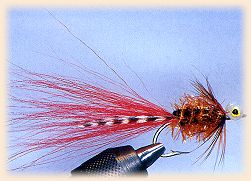 Pop-Eyed Snookery |
|
|
Recipe & Materials
Thread: White flat waxed nylon. Tail: Red bucktail and grizzly hackle. Body: Medium black chenille. Overbody: Hot orange Cactus Chenille. Hackle: Large grizzly soft hackle dyed orange (American Hen Hackle from Whiting Farms.) Eyes: Pearl eyes.
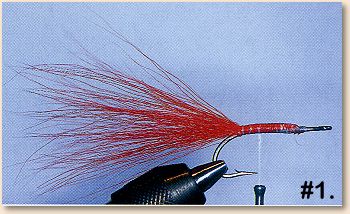
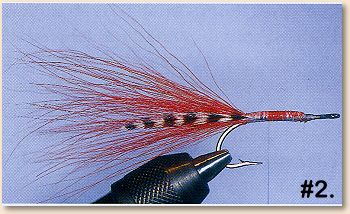 1. Start thread at the ¾ point of the hook and wrap to the back of the hook. Move thread forward laying down a thread base. Hand-stack and measure a clump of red bucktail for the tail on the fly. The tail should be about two hook shanks in length. Trim and tie in the butt ends of the bucktail at the ¾ point securing the bucktail on top of the shank. With very tight turns of thread wrap to the back of the hook, making sure the hair stays on top of the shank. Attach a grizzly hackle tip to each side of the hook so the tips are mid way into the tail. Move thread forward to the ¾ point again.
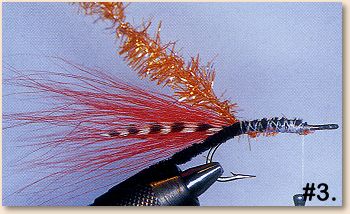 2. Tie in a length of medium black chenille on the fore side of the hook and wrap to the back of the hook. Move thread to the ¾ point again. Tie in a length of hot orange Cactus Chenille on the far side of the hook and wrap to the back. Move thread to the ¾ point. Tying in the chenille at the ¾ point and wrapping back helps maintain a nice level body.

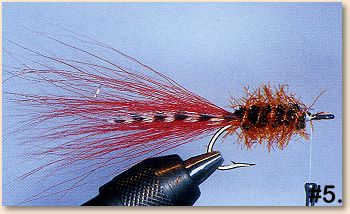 3. Wrap the black chenille forward to the ¾point leaving slight gaps between the turns. Secure with a couple of wraps of thread. Now wrap the Cactus Chenille forward, filling the gaps between the black chenille. Secure at the ¾ point also.
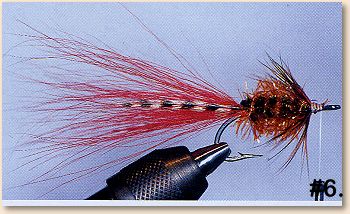 4. Prepare a large grizzly-dyed orange hen neck feather by pulling the fibers back away from the tip and trimming the tip to about 1/8 inch. Tie in the feather by the tip with the convex side up in front of the body. Wrap the feather as many times as the feather allows, forming a soft-hackle collar. Secure.
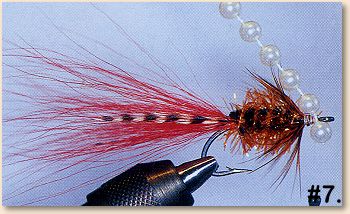
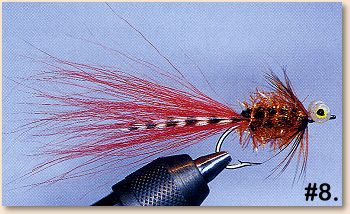 5. These pearl eyes can be found at most hobby shops and some fabric stores. They come in many sizes and you want to get the biggest you can find. Cut a pair of pearl eyes from the rope and secure in place right behind the eye with X-ing and figure eight-thread wraps. You want the eyes to be slightly forward from the body, standing out by themselves, so don't let the body get too far forward. Whip finish. Paint eyes on the pearl eyes and cement them in place with clear fingernail polish. ~ Marty Credit: This fly is from Tying Flies Like a Pro by Marty Bartholomew, published by Frank Amato Publications. This book is full of short-cuts and techniques from the experts. Very well done. For more great flies, check out: Beginning Fly Tying, Intermediate Fly Tying and Advanced Fly Tying.
|